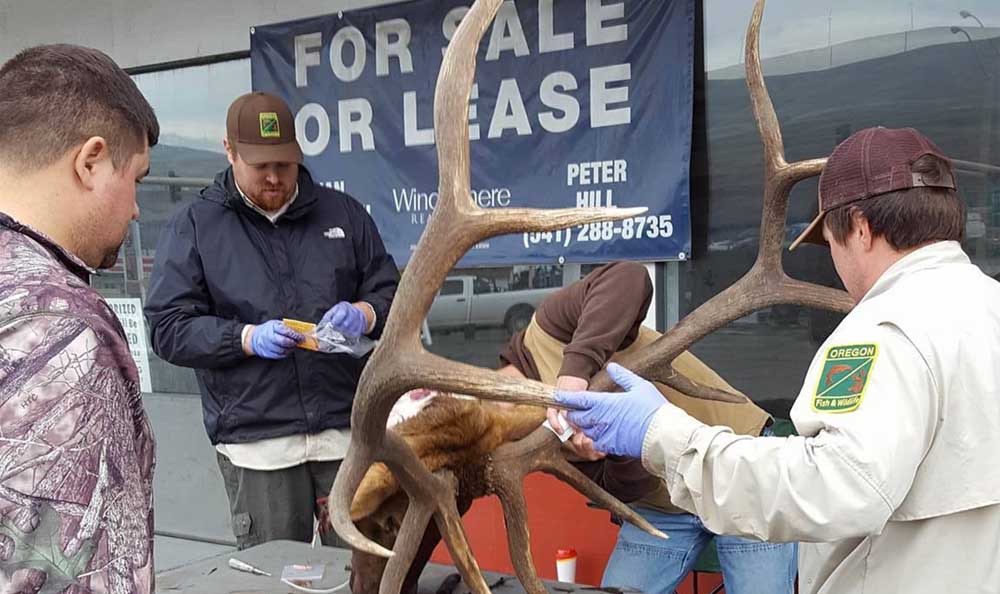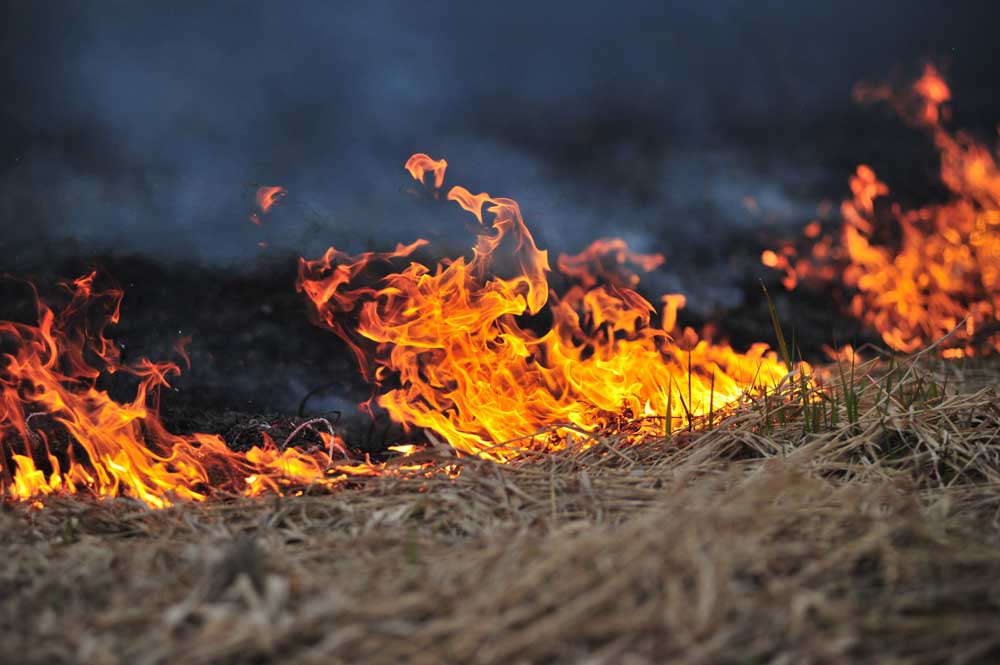Deer and elk disease comes to Central Oregon
Published 8:01 am Thursday, April 26, 2018

- Oregon Department of Fish and Wildlife staff check an elk for chronic wasting disease in 2017. (Submitted photo)
Oregon saw its first confirmed case of a fatal and easily spread disease that affects deer and elk earlier this month, thanks to a Madras hunter.
Following a recent hunting trip to Montana, Madras resident Lyle Rehwinkel, 46, brought the carcass of a deer that tested positive for chronic wasting disease, a protein disease that infects the brains and nervous systems of deer and other hoofed mammals, to Central Oregon. Tim Schwartz, division lieutenant for Oregon State Police, said there had never before been a confirmed case of an animal carcass carrying the infamous disease in Oregon.
“To my knowledge, this is the first,” Schwartz said.
Chronic wasting disease is found in captive and wild deer and elk populations in pockets across North America, from Pennsylvania to Alberta. Colin Gillin, state wildlife veterinarian for the Oregon Department of Fish and Wildlife, said the disease is spread through saliva, urine and feces, and can live in the environment — in soil or even in plant populations — for years after a contaminated animal makes contact. Gillin said the disease can sometimes take more than a year to show symptoms after a deer contracts it, but it’s always fatal.
“They’re almost like the Typhoid Mary of the (deer and elk) world,” Gillin said of infected animals.
No known outbreaks of the disease have occurred on the West Coast, but Gillin said the disease has been occurring in Colorado for at least 50 years, and it affects up to 40 percent of wild deer in Wyoming, along with a significant percentage in Utah. Montana had only seen one other positive sample, but its proximity to affected populations in other states makes it a concern, Gillin said.
With deer and elk populations in other Western states suffering from the disease, Oregon has made controlling its spread a priority. In 2002, the ODFW Commission banned the importation of live deer and elk from other states. The agency also banned hunters from bringing certain parts of deer and elk carcasses, including the skulls or nervous system, where chronic wasting disease is most concentrated in the body, from states where there has been a known case of the disease. Hunters who violate the ban can be cited for a misdemeanor.
“It’s a fairly extreme measure, but it reduces your risk,” Gillin added.
On Nov. 8, Montana Fish, Wildlife and Parks, a state agency that handles laws and regulations around wildlife in that state, notified Oregon State Police and ODFW that Rehwinkel’s mule deer carcass, which had not been properly harvested, had tested positive for the disease. Rehwinkel was cited for importing illegal deer parts, and state police officers confiscated meat from the infected deer. Rehwinkel could not be reached for comment.
While some parts of the carcass were found on Rehwinkel’s property, other parts were buried at the landfill, according to Gillin. Ultimately, Schwartz said the state agencies determined that the parts at the landfill were buried too deep to be a danger to other deer or elk. The remaining parts, Gillin said, are in ODFW’s possession and will be incinerated at 1,800 degrees Fahrenheit, a necessary step to ensure the disease can’t endure.
“It’s not like you can just throw it on the bonfire,” Gillin said.
— Reporter: 541-617-7818, shamway@bendbulletin.com








